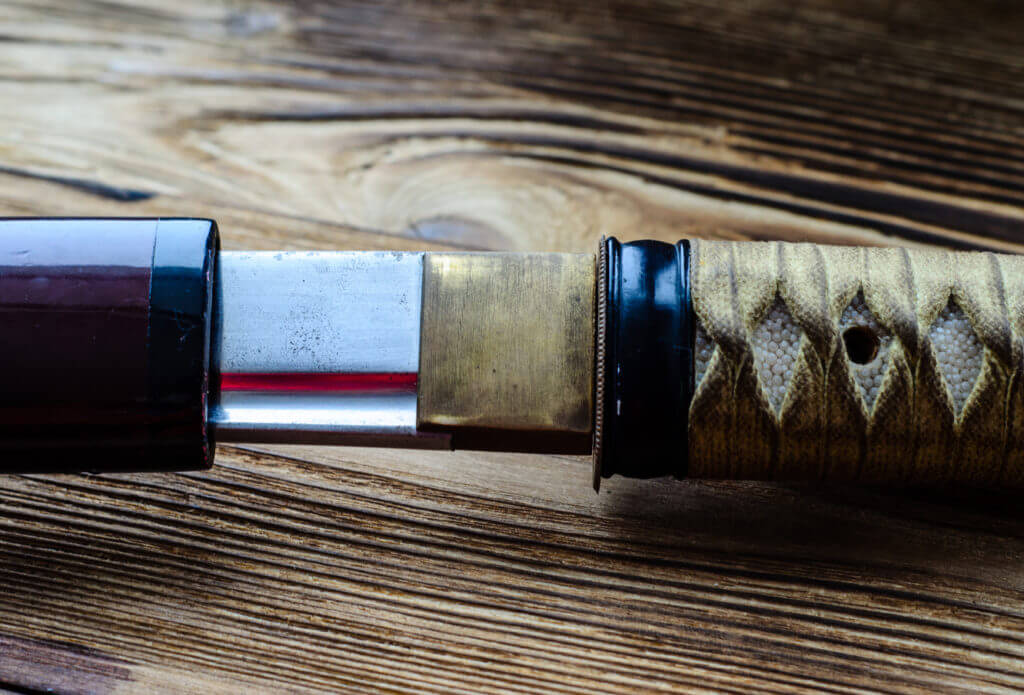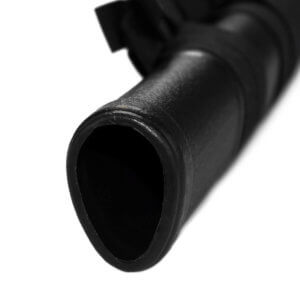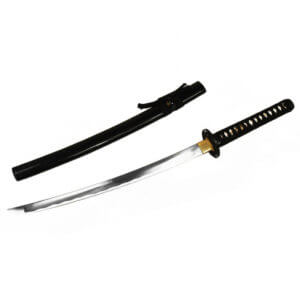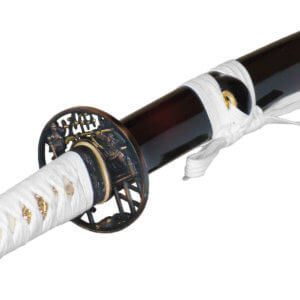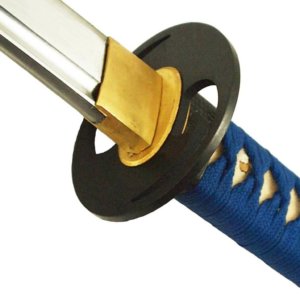There are many ways to damage a samurai sword, consciously or unconsciously.
You should therefore observe the following basic rules for sword protection in order to enjoy your sword for a long time. With the right handling, you can prevent the need for (costly) intensive maintenance/restoration:
For the sake of the blade
- The blade should not be touched with bare hands, as body fat has relatively aggressive components and can quickly cause rust on the blade.
- Most samurai swords are made of non-stainless steel. Rust is therefore one of the biggest enemies of your sword and the following applies: moisture must be kept away from the blade at all times. Do not place your sword in damp rooms and never wipe it with a damp cloth. If the blade is so dirty that it absolutely must be cleaned with a damp cloth, the blade should be dried immediately afterwards and a sword care procedure should be carried out as soon as possible.
- If possible, high-quality swords should not be spoken on closer inspection of the blade. Everyone spits when speaking, some more than others. This contamination damages the blade.
- The sword blade should always be coated with a thin layer of oil if possible. This protects against rust. You can find suitable oils and accessories in the Centreboard care category in our shop.
- When you first try to sharpen a samurai sword, the blade is usually damaged accidentally. It is therefore best to take your sword to an expert for sharpening or practise beforehand on a sword that you can cope with damage.
For the sake of the saya
- The closed sword should not be "shaken" if possible. Intensive shaking can cause the opening to wear out and damage the inside of the scabbard. Although this can be repaired later, it can be avoided in advance.
- Some lacquered scabbards (especially those with a high-gloss finish) are very susceptible to scratches. If possible, such scabbards should not be touched with bare hands, as this leaves fingerprints on the scabbard and removing them quickly causes scratches. If the binding of the scabbard strap allows it, it is therefore advisable to only grip the strap. Another alternative would be to wear gloves. Swords that are regularly used for training are also often handled. For such swords we recommend a Ishime Scabbard on which fingerprints are barely visible.
- Any other dirt should be kept away from the scabbard anyway.
If necessary, the scabbard can be wiped clean, preferably with a dry, soft cotton cloth.
That should actually be clear:
Due to regular customer enquiries, however, it apparently has to be mentioned separately...:
- A real sword should not be used for "edge on edge" show fighting. Regardless of the risk of injury, there is a high probability that the blade will be damaged.
- A samurai sword is not a tool for gardening or similar work. If you want to trim a hedge in the garden, a sword is not the right tool. Improper use poses a high risk of injury and the sword will certainly be damaged.
- The closed sword should never be held the wrong way round without first checking it, i.e. with the handle facing downwards and the scabbard facing upwards. Wood is a natural material that changes over time. This also applies to the opening of the scabbard.
The sword may not sit firmly in the scabbard and simply fall out if it is held the wrong way round. - The sharp side of the blade should always be kept away from your own body if possible. There is an unnecessary risk of injury if the cutting edge is pointing towards your own body for no reason.

